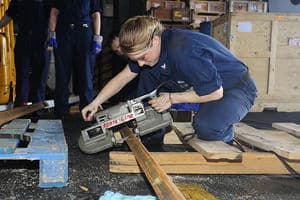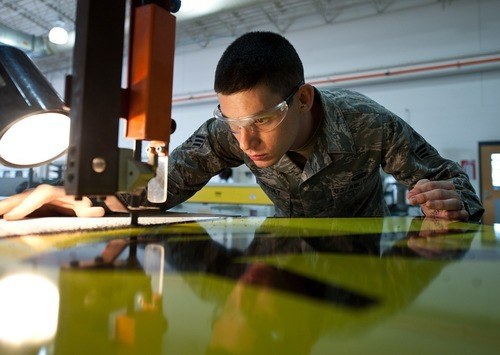How To Use A Band Saw Properly
Now that you have purchased a band saw, it is time to cut some wood. Whether you are simply re-sawing or making a precision cut, it will be exciting to fire up this machine for the first time. It can be overwhelming for beginners especially if you have never used a saw of this nature before. Before we discuss how to use a band saw, let’s discuss a thing or two about band saws.
What Is the Purpose of a Band Saw?
 Band saws are a piece of equipment you will find in many good wood shops and can be used for a variety of things. Hobbyists and homeowners love it as it can do more than cutting curves.
Band saws are a piece of equipment you will find in many good wood shops and can be used for a variety of things. Hobbyists and homeowners love it as it can do more than cutting curves.
One of the main reason many people decide to buy a band saw is due to its ability when it comes to hands-free cutting. Curves and circles are impossible with other saws which makes a band saw an invaluable tool in your workshop.
Band vidalista 40 saws also excel in re-sawing. This allows you to re-saw a stock into smaller segments along its width. You can also book match through re-sawing and make matching cabinet doors or bookends from the same piece of stock.
This piece of equipment can slice thin or thick veneers and also be used for bent laminations for people who want to get artistic on a project. If you intend to reset the face or edge of a rough sheet from the sawmill, a band saw can serve as a mini sawmill for a medium-sized piece of stock.
There are three basic kinds of band saws on the market- one is the vertical band saw, another is the horizontal band saw, and the last is a portable model. To use a band saw, you don’t need any special skills. However, depending on the task at hand, it is important to familiarize yourself with this equipment and understand how to use it.
How To Safely Use Your Band Saw
Safety
 Before you handle any power tool, it is important to wear safety gloves, goggles, and any other pertinent safety gear. Also, minimize loose clothing as it could potentially get trapped in the saw blades.
Before you handle any power tool, it is important to wear safety gloves, goggles, and any other pertinent safety gear. Also, minimize loose clothing as it could potentially get trapped in the saw blades.
Understand How Your Machine Works
Most band saw machines have variable speeds, but there are some with only one speed. Your speed indicators and power switch are located on the left side of many machines when you are standing in front of your machine.
The variable speed control and transmission shift lever are located at the back of the machine. The tilt table at the front part of the machine allows you to move a piece of stock you are cutting with ease. The air blower on the blade makes sure particles are blown away from you.
Mark Your Measurements
Mark your measurements on the piece of stock you intend to cut and make sure the sizes of the stock you are trying to cut fit through the machine, especially for contour sawing. When cutting a straight line, ensure the width of the piece of stock does not increase the distance between the column and blade of the machine. When cutting a contour, make sure the stock can pass through the gap between the blade and column in all directions.
Set Speed
Depending on the material you are cutting, the speed of the saw will vary. The general rule is that softer materials require faster speeds while harder materials require slower speeds. After switching on the machine, you should wait for a few seconds to give time to your machine to settle at set speeds.
Feeding
Once you have marked the piece of stock you are working on, set the speed and be ready to feed the piece of stock to the machine. Depending on the type of machine you are using, the object can be fed using the powdered feeder or manually. Before feeding the stock, and even before turning the band saw on, check the side of the teeth the blades are facing. Feed your piece of stock through this side.
Bottom Line
While it is easy to rush when using a band saw for the first time, always read your machine’s user manual and learn how it works before turning it on. This will allow you to familiarize yourself with various parts and how to troubleshoot as every machine will have its set of quirks.
Make a few test cuts before working on an expensive object or attempting a circle. This will help you avoid costly mistakes.

